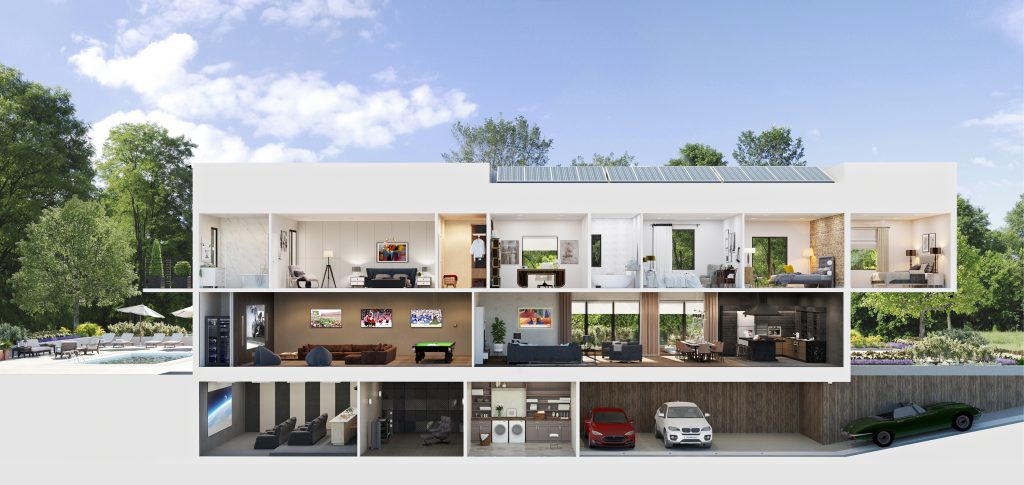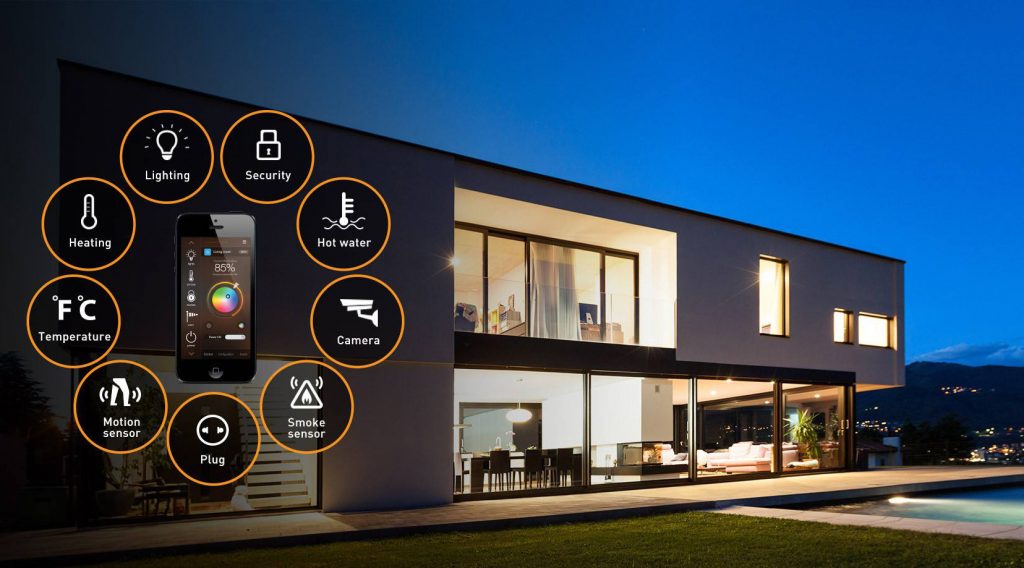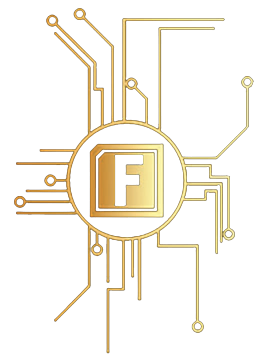Are Domotics, Home Automation, and Smart Home the same thing?
The word Domotics comes from the French “Domotique“, from the junction Domus “house” with “Immotique” “automatic”, that is, Automatic House or Smart Home.

Welcome to the Future
The prototype of the house of the future – not a single hundred fantastic books and articles have been written about it. Today, science fiction writers’ dream – a Smart Home, in which computers are responsible for all vital functions, is coming true. If you briefly express the main features of this house, then you can be content with a few words: comfort, functionality, and energy efficiency.
The Smart Home adapts to your habits. It will turn off the lights in the whole house when everyone is sleeping, turn off unnecessary electrical outlets, change the underfloor heating and climate control system to economy mode, close the doors and arm the alarm by the perimeter of your house. It will heat the rooms in the morning, prepare the coffee, wake you up with your favorite music and monitor the safety of your children. Your house becomes an excellent guard – it watches over every window, every door, and also it is the perfect butler – it announces the arrival of the guests. Smart Home will call you at work, giving you the opportunity to communicate if guests have arrived in your absence. You can manage your home from your smartphone. In such a house it is neither too dark nor too hot, everything is automatically controlled depending on the scenarios you choose. You can turn on the lights, close the curtains and turn on the music at the touch of a button or voice command to your house.
And also, “Smart Home”, like the house created in the fantasy world of Ray Bradbury, can talk to the owner: greet him, inform him that the order has been completed: “Bath is full”, “Coffee is ready”. The house monitors energy consumption and makes housing comfortable and economical.
And you can control the entire house with the help of a small touch panel.
Smart Home – there are legends about it, and many of them, interestingly, are not the fiction of a science fiction writer, but a reality created by the free imagination of talented engineers.
How does the Smart Home/Domotics work?
Everything is simple and complex at the same time. The working principle of our Smart Home is based on distributed intelligence technology. “Distributed” means that a central computer is not needed (which in other systems is the “Brain” of the house that is responsible for the operation of all functions). Therefore, the failure of the processor can lead to the fact that the house remains unmanageable. In our system, each node has its own intelligence. Together, they connect to a common managed network and exchange information with each other. This increases reliability by an order of magnitude (the failure of a single device does not affect the operation of the system as a whole), thus making it flexible and easily expandable.
How to manage the Smart Home?
All subsystems and appliances are controlled via a universal remote control panel, computer or telephone. The Panel screen shows all devices connected to the home automation system, and you can control each of them. One-touch on the screen and you can easily control the devices: turn on the light, music or air conditioning. You can set the control so that one button closes the curtains, turns off the lights and music, and locks the door. And call this scenario – “Good Night”. You can create any scenario for your home and each of these scenarios will be activated when you press a single button or when you give a command to the voice assistant, for example: “Hi Siri, Good Night”.
What does a smart home system include?
The smart home is a unified control system in a home, office, apartment or building, which includes sensors, control elements and actuators. The control elements receive signals from sensors and control the operation of the actuators, acting according to specified algorithms and combining the following systems:
- Domestic heating (through radiators or underfloor heating);
- Ventilation and air conditioning;
- Security and fire alarms;
- Access control system;
- Emergency control: water leak, gas leak, power failure;
- Video surveillance (local and remote);
- Indoor and outdoor lighting control;
- Video and audio distribution and in different rooms (multi-room);
- Control over energy consumption, limiting load peaks and distributing loads by phases of the supply network;
- Management of backup power sources: battery UPS and diesel generators;
- Management of sewage pumping stations and automatic irrigation systems for green areas;
- Management of gates and barriers;
- Management of curtains, blinds and blinds;
- Remote monitoring and control of all home systems via the Internet.

Pros and Cons
Like other devices, the smart home system has its advantages and disadvantages. So, let’s analyze:
| Advantages | Disadvantages |
|---|---|
| Safety. The system completely controls the environment. If unscheduled access was made, it will send a notification about it. In case of emergencies, the smart home will try to prevent them, this includes the occurrence of fires. It allows monitoring of what is happening at home from anywhere in the world. | Price. Despite the fact that the system device mainly consists of primitive sensors, cameras, etc. its cost is high. It takes approximately 5 years to recover investment in Smart Home. |
| Easy to use. The entire system is controlled by a single device. Most of the time, they are smartphones. | Maintenance. Like any other equipment, the system can break down. In this case, only experienced installers, who are still not very easy to find, can solve the problem. |
| Flexible settings. The system allows you to customize the devices for yourself, change their functions. You can also add other devices to it at any convenient time. | |
| Savings. Smart home reduces the cost of utility bills. This is because the system disables devices that are not currently in use. Thus, the load on the network is reduced and, with it, the consumption of electricity. Savings in lighting can reach 40% and in heating 30%. | |
| Automation. Most household items can be connected to smart home. So this makes it possible to manage them automatically. This saves a lot of time. | |
| Design. All elements of the system (buttons, thermostats, sensors, sockets, switches) look modern and fit stylishly into any interior. |
The most important thing in smart home system installation is to choose high-quality equipment and experienced technicians. So the smart home will serve you for a long time, thus simplifying your life.
How to request Domotics/Smart Home quote?
To give a quote we need to know:
- What do you intend to have. As we mentioned before about the possibilities of home automation, you have to choose what makes the most sense for you. For example, you don’t want to have a sound system or a cinema, but you want to have lights, heating, and cooling with shutters and curtains connected to home automation. Our county – make a list and if you have any doubts, consult us.
- Installation Description. Is your house already built or is it still in the design phase or do you intend to remodel? Do you have normal electrical installation or with pre-installation for home automation?
- Equipment installed. Perhaps you already have some equipment or systems connected to home automation and want to take advantage of them?
Design and Aesthetics. Have some design ideas? Or do you want some specific equipment from the manufacturer? - Budget available. Knowing the limit as far as we can go will be a good indicator to respect for your needs. Whatever the limit within home automation, there is equipment suitable for the most diverse budgets.
- Plan or Project. Show where you want to have Home Automation installed. Is it a house or apartment?




